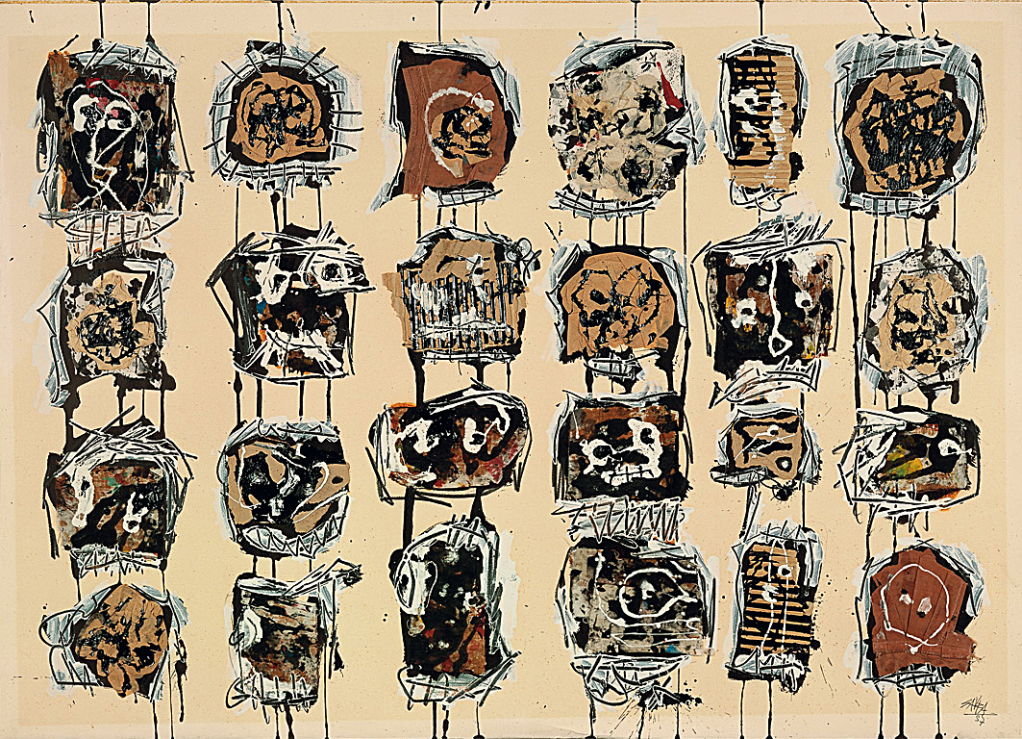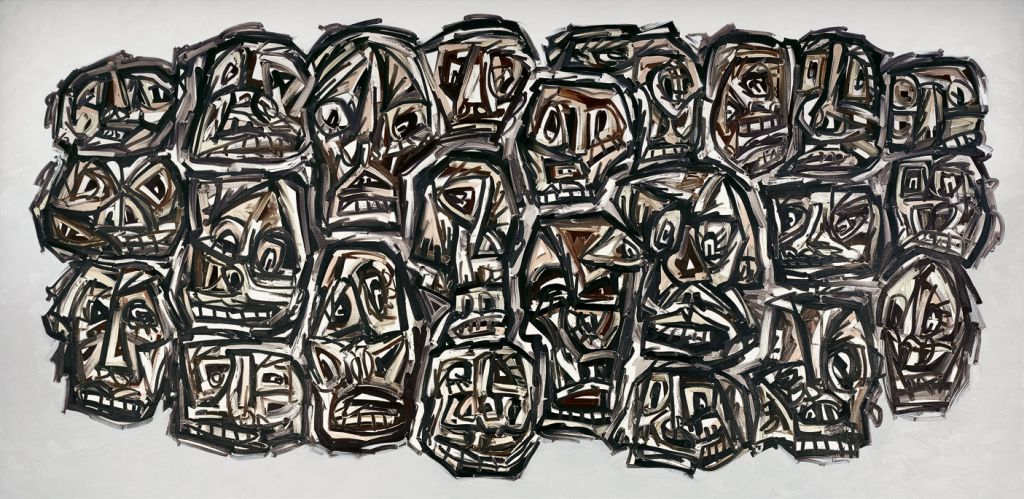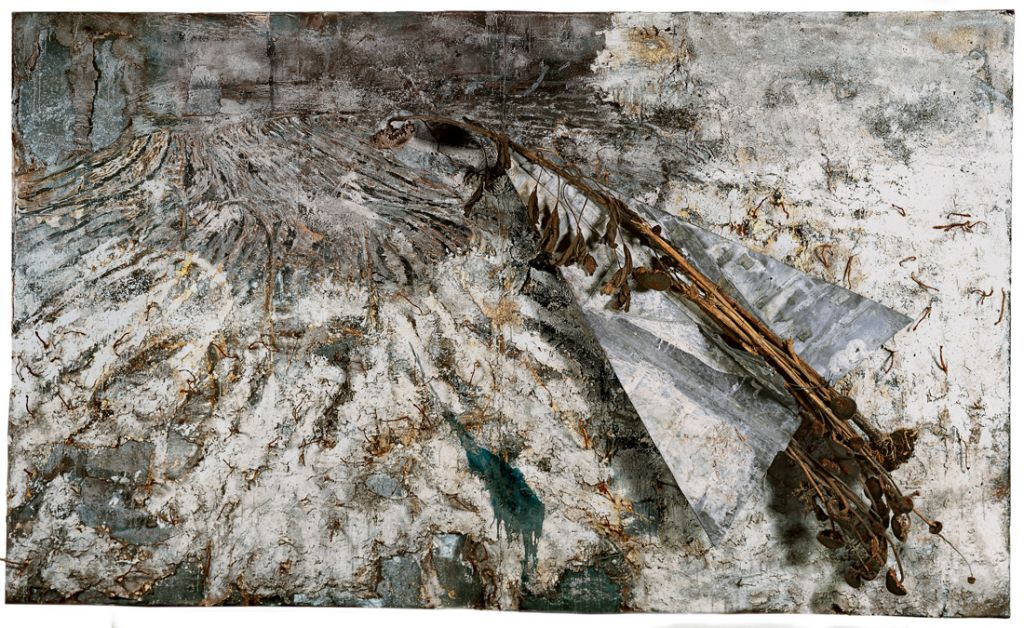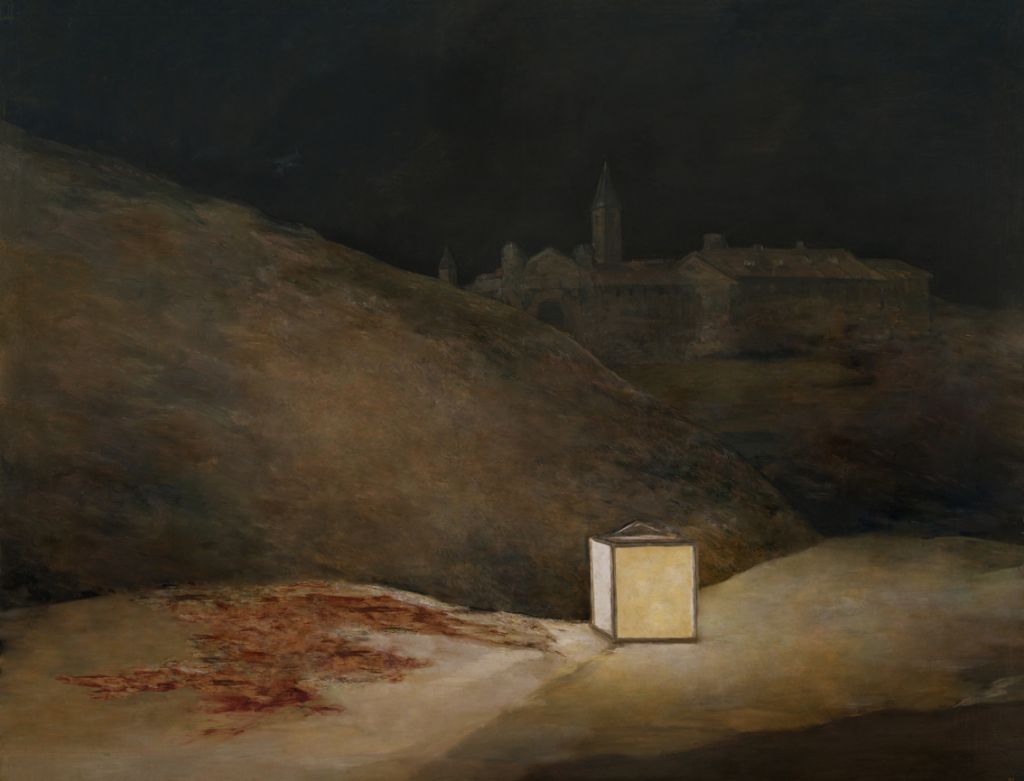Imaginary Portrait of Goya
1985Mixed media on paper83.5 X 125 X 5.5 cm
Antonio Saura was struck at an early age both aesthetically and emotionally by the work of Diego Velázquez and Francisco de Goya, two of Spain's greatest masters. But as a painter setting out in the repressive political and cultural climate of early-1950s Spain, he sensed that this grand tradition had to be wrested from the grasp of Francoist culture, which was setting it up in opposition to contemporary European Art Informel. Paradoxically, it was by subjecting high Spanish tradition to the most radical new modes of painting that Saura managed to free it and give it a powerful new life: he took the gestural painting associated with Art Informel and American Action painting and applied it to the figure and to traditional Spanish themes. After a short period in Paris in the 1950s, during which he briefly associated with the Surrealists, Saura returned to Spain and founded the group El Paso (1957-60), which in its work and in its eponymous publication promoted the advanced forms of painting being developed elsewhere in Europe and the United States. (Saura was one of the first to champion Jackson Pollock in Spain.) During this period Saura limited his palette to white and black and began the thematic series that would occupy him for much of the rest of his career, including the "Crucifixions," "Women," "Nudes," "Crowds," "Portraits," and "Imaginary Portraits" (the latter depicting historical Spanish figures such as Goya and Philip II). Saura was highly versatile: besides painting, he produced prints, illustrated books, and stage sets, and was also a prolific writer.
One of Goya's so-called Black Paintings (1821–23) preserved in Madrid's Museo Nacional del Prado had particularly fascinated Saura since childhood. Titled The Dog, this highly enigmatic, starkly reductive painting features the head of a dog protruding from behind a dark sloping mass at the bottom of the composition; the majority of the painting is taken up by an empty ocher sky. It inspired a series of paintings by Saura—variously titled Imaginary Portrait of Goya (Retrato imaginario de Goya) or Goya's Dog (El perro de Goya)—on which Saura worked regularly from 1957 until 1992. In the Guggenheim Museum Bilbao's Imaginary Portrait of Goya, darkness, or the void, occupies most of the composition, with only a small area of white confined to the upper right corner, above the scrawled figure of the dog. According to Saura, "The notions of 'emergence,' 'birth,' and 'appearance' are forever necessarily associated with the tremendous importance of the void."[1]They are all states of being that correspond with those of artistic creation: making a space and something that was not there previously appear or something that was there disappear. But the painted or sketched subject also has another metaphorical value: "The head of the dog emerging, like a portrait of our solitude, is nothing less than Goya himself contemplating 'what is happening.'"[2]
Notes:
1. Saura, "Iniciales," in Antonio Saura: Peintures, 1956–1985 (Geneva: Musée Rath, 1989), p. 17; Antonio Saura par lui-même (Milan: 5 Continents Editions, 2009), p. 55.
2. Ibid.
Source:
Rainer Michael Mason. "Antonio Saura." In Guggenheim Museum Bilbao Collection. Bilbao: Guggenheim Museum Bilbao; Madrid: TF Editores, 2009.
Original title
Imaginary Portrait of Goya
Date
1985
Medium/Materials
Mixed media on paper
Dimensions
83.5 X 125 X 5.5 cm
Credit line
Guggenheim Bilbao Museoa






